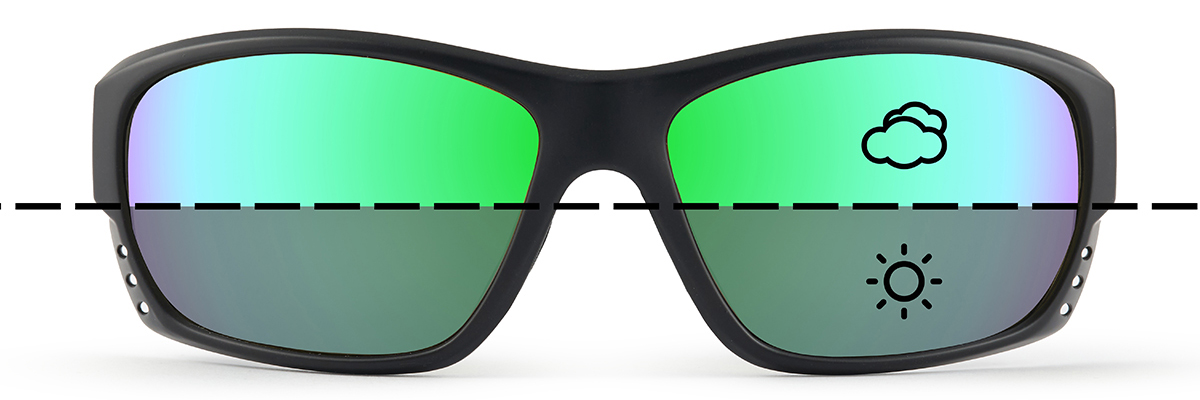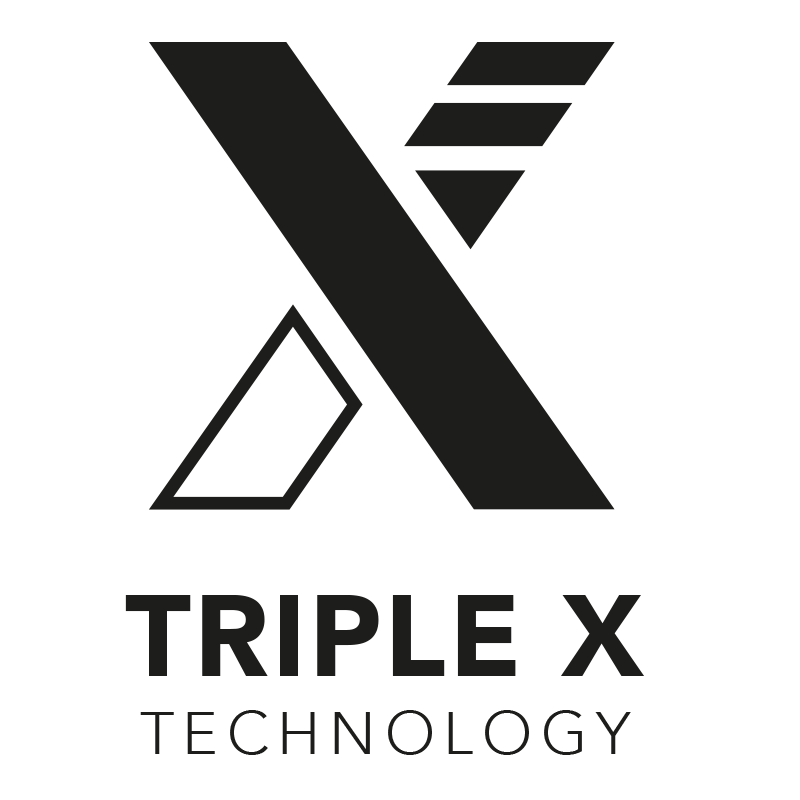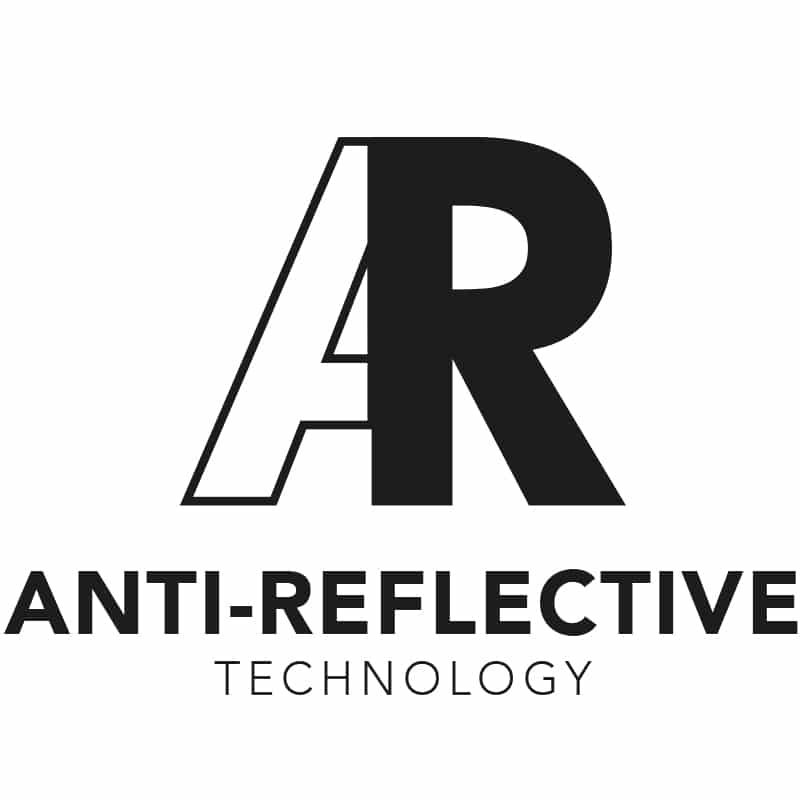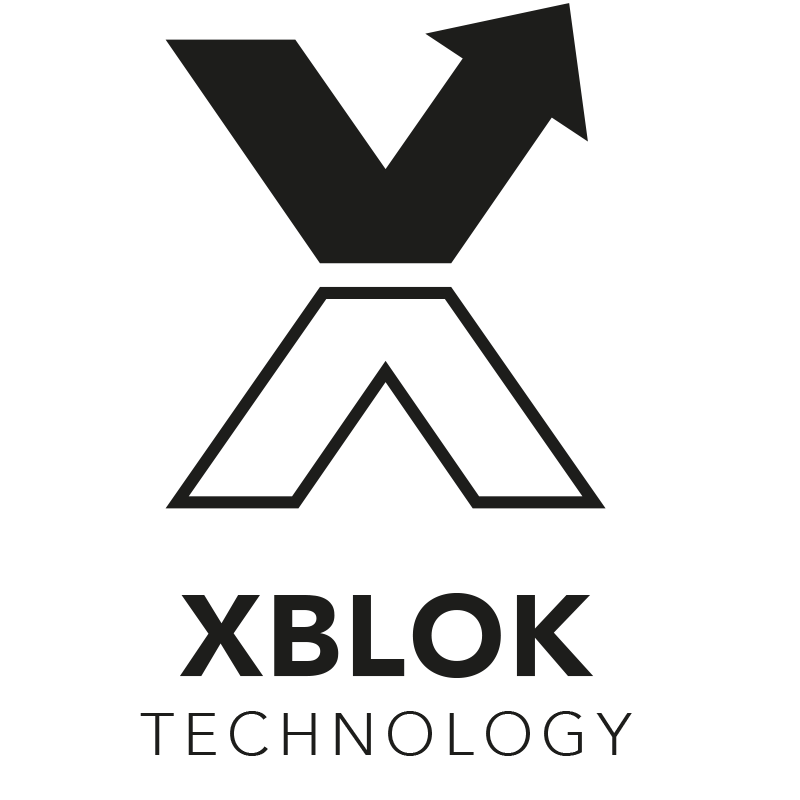FISHING SUNGLASSES LENS GUIDE
Understand lens colours, polarisation & tech on Fortis sunglasses.
This guide helps you pick the right polarised fishing lenses for the way you fish — tint, material and coatings. We’ll show you how different colours perform in different light and water, explain the difference between glass, Triple X and standard lenses, and when to use photochromic and mirror-coated options. The goal is simple: less glare, more detail, less eye strain. That’s how you find fish faster.
When light bounces off flat surfaces like water it becomes polarised, which creates harsh horizontal glare. That glare blinds you to what’s under the surface and it’s fatiguing to look at for hours. Fortis polarised fishing sunglasses use a polarising filter layer that blocks that reflected glare so you can see more clearly into the water and keep your eyes comfortable for longer.
Our lenses deliver high polarising efficiency, UV400 protection and are tested to and pass BS EN ISO 12312-1:2015.
Translation: less white-out on the surface, more detail below it.
Advantages: significant reduction in eye strain.
Result: better watercraft.

The quickest way to choose a lens tint is to match it to light level a water clarity.
You don’t need a science degree — just the right tool for the conditions.
A house favourite and worn by many a big carp angler. Our Amber AMPM lens is aptly named for its' effectiveness in the hours of dawn and dusk.
When to use an amber lens
Light transmission: 38% - high (lets in more light).
Use in: low light, overcast days, snaggy margins, under trees, coloured / murky water.
Why: boosts brightness and contrast so you can still read shape and movement when it’s dull.
Contrast: Medium / High
One of the most well established lens colours. Our Brown 247 lens has been fine tuned to maximise contrast.
When to use an amber lens
Light transmission: 13% - lower (darker tint).
Use in: brighter daylight, mixed cloud, situations where you need strong contrast.
Why: high contrast definition helps pick out silhouettes, bars, patrol routes, fish shapes.
Contrast: High
Popular amongst the fly & sea angling community, due to the comfort and natural vision property of the tint. Suited for long sessions and hours spent focused on a fly.
When to use an green lens
Light transmission: 18% - medium.
Use in: medium to bright light, shallow / clear / weedy water.
Why: gives a natural view of the water and weed without over-warming or over-darkening the scene.
Contrast: Medium
Built for bright, high-glare conditions, Grey keeps colours true and tames harsh light for open water and clear skies. The most neutral tint for long hours, reducing eye fatigue without adding extra contrast.
When to use an green lens
Light transmission: 14% - darker / sun-friendly.
Use in: bright sun, high glare, clear water, open water in summer.
Why: neutralises brightness and helps reduce eye fatigue if you’re sensitive to harsh light.
Contrast: Medium
Different lenses manage light, clarity and comfort in different ways.
First, choose how you want the tint to behave:
Fixed Tint (colour): pick Amber / Brown / Green / Grey to match conditions (cloudy, mixed, bright).
SWITCH (photochromic): the tint adapts automatically—lighter in cloudy conditions, darker in sunnier conditions—ideal for variable weather or “all-day on the bank” sessions.
Once you’ve chosen Tint or SWITCH, choose your lens material for clarity, weight and durability.

SWITCH (Photochromic) lenses adapt to the weather—lightening in cloud and shade, darkening in bright sun—so your view stays comfortable and consistent.
When to use SWITCH (photochromic)
Light transmission: Variable — lightens in dull/overcast, darkens in bright sun.
Use in: Dawn-to-dusk sessions, mixed weather, moving between shade (trees) and bright, open water.
Why: Adapts automatically so you keep usable contrast without swapping lenses; one pair covers changing light.
Contrast: Medium, auto-adjusting for natural, comfortable vision.
☁️
Bad light / coloured water
Amber or SWITCH
🌤️
Mixed light / natural contrast
Brown or Green
☀️
Full sun / high glare
Grey or Green

Choosing between Sklo, Triple Xa Standardní lenses comes down to clarity, weight, and durability. Glass offers the sharpest view and toughest surface, Triple X delivers high-definition optics in a super-light package, and Standardní keeps true polarisation at the most accessible price.
Sklo – Ultimate clarity & scratch resistance.
Sharpest optics and richest colour fidelity with full polarisation; slightly heavier and premium-priced.
Triple X (polymer, high-definition) – High definition, super light, all-day comfort.
~99.9% polarised with excellent clarity at a fraction of the weight of glass; less scratch-resistant than glass.
Standard (polymer) – 99.9% polarised, lightweight, best value.
Reliable glare cut and everyday clarity at the most accessible price; long-term scratch resistance is lower than glass.

Anti-Reflective (AR) Coating: Applied to the inner surface of the lens to stop light bouncing back from your own face or cheekbones. It eliminates distracting reflections, giving a cleaner, higher-contrast view into the water. Best suited to bright, sunny conditions where glare and internal reflections are most noticeable.

XBLOK (Mirror Coating): A reflective outer coating that adds an extra layer of glare protection and fine-tunes how your lens performs in different light.
XBLOK mirror coatings do more than look good — each one’s designed for a purpose. Different colours manage glare, contrast and clarity so you can see deeper in any light.
PURPLE XBLOK
Enhances contrast to help reveal subtle shapes and movement beneath the surface.
BLUE XBLOK
Maintains natural colour perception and reduces glare in bright, open conditions.
GREEN XBLOK
Balances true-to-life colour with a gentle contrast boost for clear, comfortable vision.
RED XBLOK
Improves depth perception and definition in mixed or shifting light.
SILVER XBLOK
Offers balanced performance and glare control across a wide range of conditions.
GOLD XBLOK
Maximises visual clarity and contrast under intense sunlight.
Nejčastější dotazy
Polarised lenses block horizontal glare bouncing off the water’s surface so you can see fish, weed beds and structure more clearly. They reduce eye strain and help you focus longer—ideal for long sessions on the bank.
Yes. All Fortis fishing sunglasses use a polarising filter designed to block reflected surface glare so you can see through water more easily. That’s the core job.
One simple test: put on the sunglasses, view a digital screen (like a phone) and rotate the glasses ~90°. If the screen darkens or changes visibility, they’re likely polarised. Also ensure the specs clearly state “polarised” and UV400 protection.
That’s a solid starting rule.
Amber / SWITCH for low light and coloured water.
Green / SWITCH for mixed light and detail work.
Brown / Grey for harsh glare and full sun.
Photochromic (SWITCH) lenses change tint automatically — lighter when it’s dull, darker when it’s bright — so you don’t have to swap glasses as conditions change.
Glass gives maximum clarity and scratch resistance but adds weight and cost.
Triple X is the lighter, high-clarity option for all-day wear.
Standard is the affordable, still-properly-polarised everyday option.
Yes. We offer prescription options. Click this link to the Prescription page.
In murky or coloured water choose brighter tints (like Amber or SWITCH) to let more light in and lift contrast. For clear or shallow water choose darker tints (Brown/Green/Grey) that stabilise vision and cut glare. Your tint choice should match the water clarity a available light. If in doubt, go SWITCH or Amber (as UK weather is generally dull)
Yes—in many UK scenarios SWITCH photochromic lenses give excellent flexibility. They automatically darken as UV increases and lighten when conditions turn dull—so you don’t need to swap pairs mid-session. Perfect if you fish all day or move between bright and shaded swims.
Glass offers the best clarity and scratch resistance, but is heavier and more expensive. Polymers (Triple X or standard) are lighter and more affordable with excellent polarisation—so great for all-day comfort and mobile fishing. If in doubt start with our stand lenses, you won't be disappointed!
Rinse frames in non-salt water. Use a micro-fibre cloth or case cloth (provided with all our models) and/or our lens cleaner (never harsh chemicals). Store in a hard case when not in use. Clean lenses maintain contrast, clarity and help your coatings last longer. Using a t-shirt or jumper to clean the lenses will deteriorate the lenses over time.
Yes — both insect repellents and some sun creams can degrade lens and frame coatings over time. The chemicals (especially DEET, alcohol, or certain oils) react with paint, rubberised finishes, and hydrophobic or mirror coatings, causing them to haze, peel or lose their sheen. To avoid this, always wash and dry your hands before handling your sunglasses after applying sun cream or repellent, and wipe down the frame with a clean microfibre cloth if any residue gets on the surface.
Need a Hand Choosing?
Get in touch with our team.


